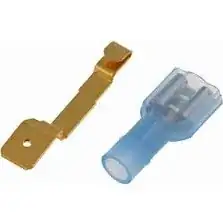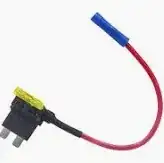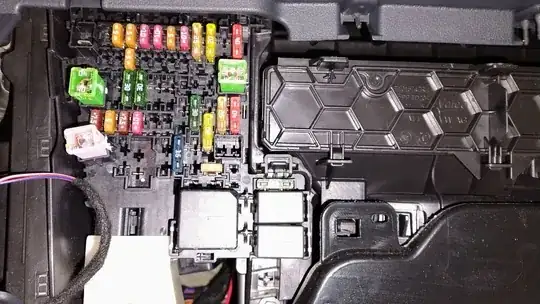I believe you are thinking about this wrong, mainly because the side you want to tap is the power side of the fuse. This is the side of the fuse power is delivered to it. If you use the opposite side, you're actually using the fuse as well, which can cause it to be overloaded with the camera's draw as well as the vehicle accessory draw. Here's what you need to do instead.
First, you need inline fuses for your camera on both sides (always active and keyed on) wires. This is to protect your device and the vehicle.
Next, with a multimeter and the vehicle keyed off, start checking the fuses for power. This will tell you whether the circuit is live or not with the key off. Check several fuses and find an active one which has the highest value for fuse protection. To figure out which side the power is actually coming from, pull the fuse and check the slots to see which side is powered. This is the side you want to tap off of so you're not overloading the fuse in the panel.
You'll want to use a larger fused circuit, like the 30A or 40A fuses, for your keyed on power source. This is because this circuit is rated for a higher load and can most likely handle it. Once again, find the powered side of the fuse and use it for your fuse tap.
Depending on what type of fuse tap you're using will dictate how it's installed. There are two primary types I'm aware of. First is like this:

This would go on the powered side as I suggested and slips over the leg of the fuse. The second type is like this:

The wired side of the tap would go to the powered side of the fuse. Remember, if using this type, you still need a separate inline fuse so as to protect the vehicle, vehicle accessory, and camera.
For the third wire, you can utilize any grounding (earth) source you can find. You may have to run a ground wire if the camera wire is not long enough.


